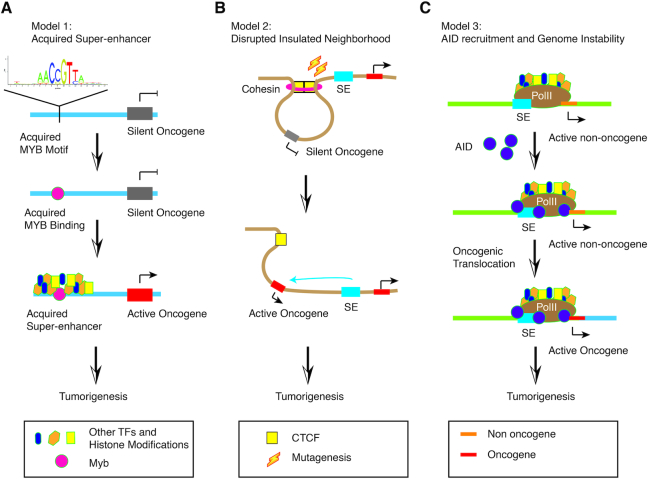Figure 6.
Three models of cancer-acquired super-enhancers. (A) Model 1: Due to mutation occurrence, a MYB binding motif is generated next to a silent oncogene, and the motif recruits MYB protein binding. Following the multi-stage transition model, the master TF binding accumulates more stable signals of other TFs, chromatin remodelers and histone modifications, resulting in formation of a stable and strong SE. Hence, the adjacent oncogene is activated (black arrow) by the newly acquired SE and causes oncogenesis. (B) Model 2: Unlike Model 1, the mutation does not create a novel binding site for master TFs but erases a binding site of CTCF, which is also an anchor site for an insulated neighborhood (brown circle). The formerly silent oncogene is activated by a juxtaposed SE and consequently results in tumorigenesis. Note that CTCF/Cohesin binding site mutation is significantly enriched in cancer genome. (C) Model 3: The activation-induced cytidine deaminase (AID) is accumulated to the largely permissive chromatin surrounding an SE by convergent transcripts from enhancer RNA and mRNA transcribed from the SE and gene body, respectively. Binding of AID triggers instability of genome and concomitantly translocation, which brings an oncogene next to the SE and promotes lymphomagenesis.

